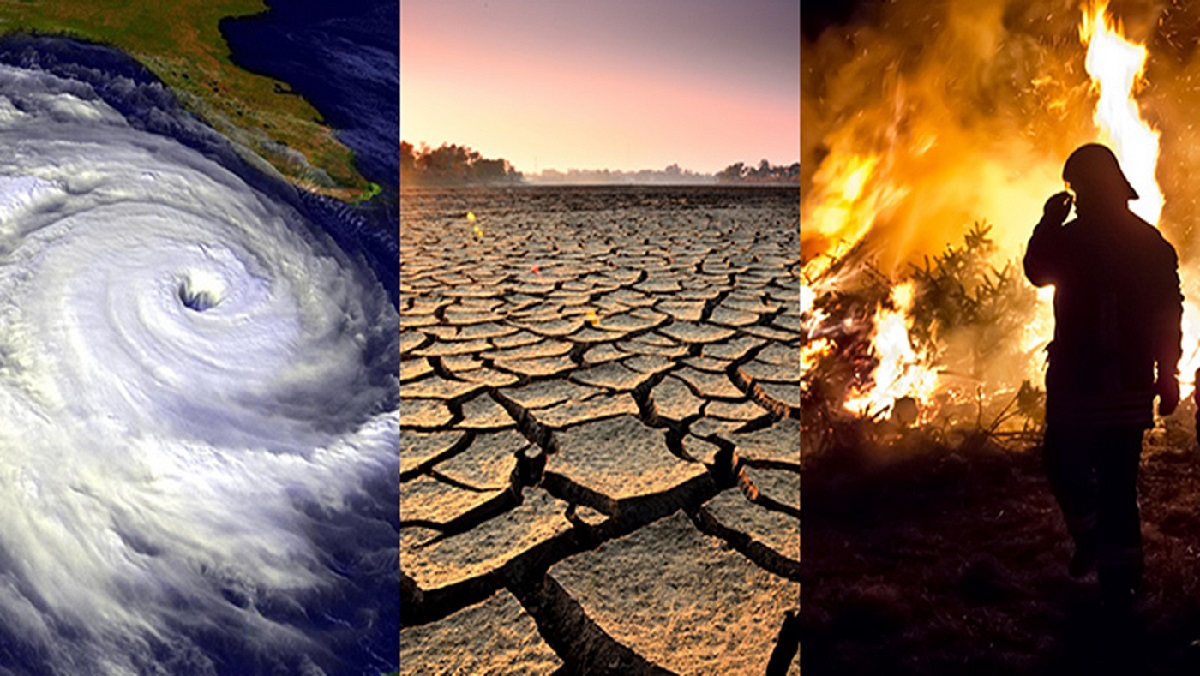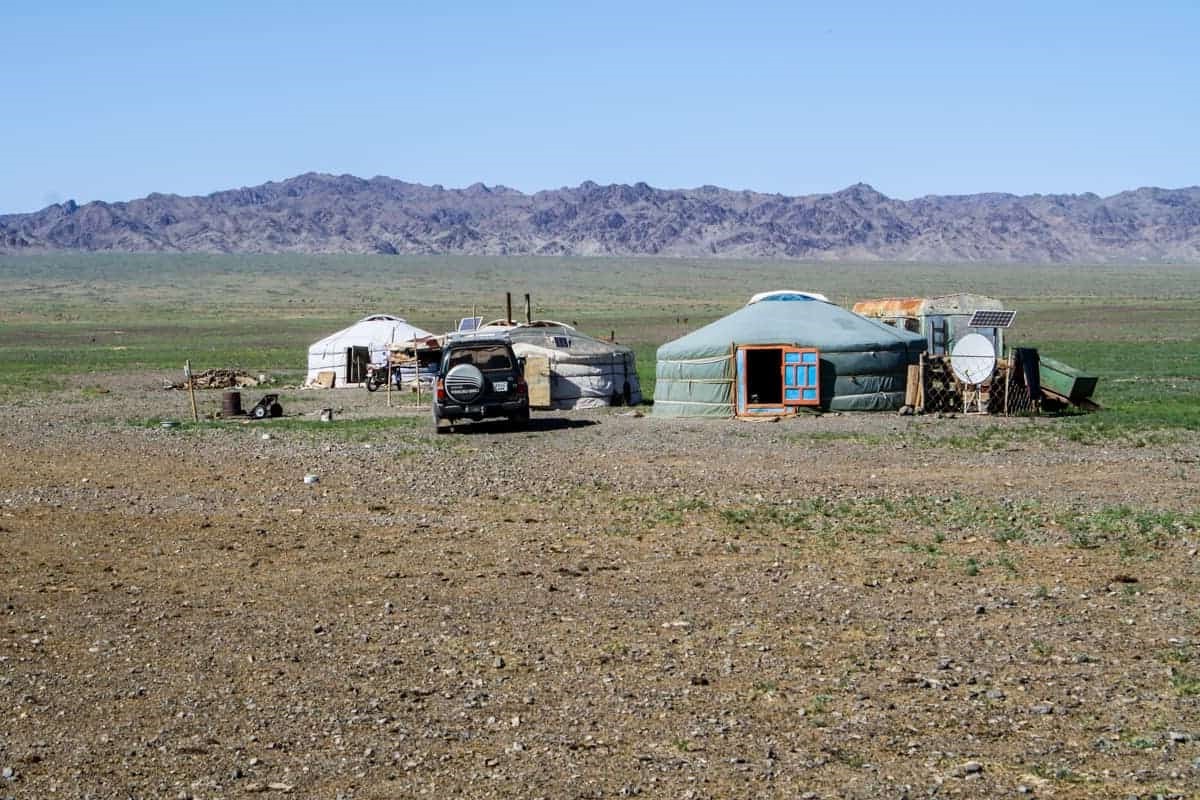Home>Weather and Climate>Exploring Florida’s Climate And Weather Patterns


Weather and Climate
Exploring Florida’s Climate And Weather Patterns
Published: March 7, 2024
Explore Florida's diverse weather and climate patterns, from sunny beaches to tropical storms. Learn about the state's unique meteorological phenomena and plan your visit accordingly. Discover the latest weather trends and forecasts for your Florida adventure.
(Many of the links in this article redirect to a specific reviewed product. Your purchase of these products through affiliate links helps to generate commission for Temperatures.com, at no extra cost. Learn more)
Table of Contents
Introduction
Welcome to the Sunshine State, where the weather is as diverse as the people who call it home. Florida, with its stunning coastline, vibrant cities, and diverse ecosystems, experiences a fascinating array of weather patterns and climatic conditions. From the tropical allure of the Florida Keys to the dynamic urban landscapes of Miami and Orlando, the state's climate plays a pivotal role in shaping the experiences of both residents and visitors.
In this article, we will embark on a captivating journey through Florida's climate and weather patterns, delving into the geographical features that influence its meteorological phenomena. We will explore the impact of the Gulf of Mexico and the Atlantic Ocean on Florida's weather, uncover the seasonal variations that define the state's climate, and examine the occurrence of extreme weather events. Furthermore, we will consider the implications of climate change on Florida's environment and inhabitants.
Join us as we unravel the intricate tapestry of Florida's climate, gaining a deeper understanding of the forces that govern its weather and the implications for the state's future. Let's embark on this enlightening exploration of Florida's climate and weather, where the allure of the tropics meets the dynamism of the urban landscape.
The Geography of Florida
Florida, situated in the southeastern region of the United States, boasts a diverse and captivating geography that profoundly influences its climate and weather patterns. The state is renowned for its expansive coastline, encompassing the Atlantic Ocean to the east and the Gulf of Mexico to the west. This strategic positioning exposes Florida to a myriad of meteorological influences, shaping its climate in unique and compelling ways.
The iconic Florida Peninsula, extending southward from the North American continent, is a defining feature of the state's geography. This elongated landmass is flanked by the Atlantic Ocean on the east and the Gulf of Mexico on the west, creating a distinctive coastal environment that significantly impacts the state's weather patterns. The peninsula's proximity to large bodies of water plays a pivotal role in regulating temperatures, fostering maritime influences that contribute to the state's subtropical and tropical climate zones.
In addition to its coastal expanses, Florida is adorned with diverse ecosystems, including the renowned Everglades, a sprawling wetland teeming with biodiversity. The Everglades, often referred to as the "River of Grass," encompasses a vast expanse of marshes, prairies, and mangrove forests, serving as a critical component of Florida's ecological tapestry. Furthermore, the state is adorned with numerous lakes, rivers, and estuaries, enriching its geographical diversity and contributing to the intricate web of climatic influences.
The state's topography is characterized by a relatively low elevation, with the highest point, Britton Hill, reaching a modest 345 feet above sea level. This predominantly flat terrain, coupled with the abundance of water bodies, fosters unique atmospheric interactions, including the development of sea breezes and the modulation of precipitation patterns. These geographical features collectively contribute to the dynamic and multifaceted climate experienced across the state, shaping its weather patterns and climatic nuances.
As we delve deeper into Florida's climate and weather, it becomes evident that the state's geography serves as a compelling backdrop, influencing meteorological phenomena and contributing to the rich tapestry of climatic diversity. The interplay between land, water, and atmospheric dynamics creates a captivating mosaic of weather patterns, defining the essence of Florida's meteorological identity.
The Influence of the Gulf of Mexico and Atlantic Ocean
The Gulf of Mexico and the Atlantic Ocean exert a profound influence on Florida's climate, shaping its weather patterns and contributing to the state's meteorological diversity. Situated on the southeastern edge of the North American continent, Florida is flanked by these expansive bodies of water, each playing a distinct role in modulating the state's climate.
The Gulf of Mexico, with its warm waters and strategic positioning to the west of Florida, serves as a crucial source of moisture and energy for the state's weather systems. During the summer months, the Gulf's waters act as a reservoir of heat, fostering the development of convective activity and contributing to the formation of thunderstorms and tropical disturbances. The warm and moist air masses originating from the Gulf often interact with frontal boundaries, instigating the genesis of intense thunderstorms and localized heavy rainfall events across the state.
On the eastern front, the Atlantic Ocean exerts its influence on Florida's climate through a myriad of atmospheric interactions. The ocean's proximity engenders the development of maritime air masses, characterized by higher humidity levels and moderated temperatures. This maritime influence contributes to the amelioration of temperature extremes, fostering milder conditions along the coastal regions. Additionally, the Atlantic Ocean serves as a catalyst for the formation of tropical weather systems, including hurricanes and tropical storms, which can profoundly impact the state's weather patterns, particularly during the Atlantic hurricane season.
The combined influence of these two bodies of water engenders a unique dichotomy in Florida's climate, characterized by the interplay of maritime and continental air masses. The coastal regions experience the ameliorating effects of the oceanic influences, while the interior areas are subject to the dynamic interplay between continental air masses and localized convective processes. This intricate dance of atmospheric dynamics contributes to the rich tapestry of Florida's weather, defining its climatic nuances and seasonal variations.
In essence, the Gulf of Mexico and the Atlantic Ocean stand as formidable influencers of Florida's climate, imbuing the state with a meteorological dynamism that reflects the complex interplay between land and sea. The convergence of these maritime influences and continental dynamics creates a captivating mosaic of weather patterns, underscoring the profound impact of these expansive bodies of water on Florida's climatic identity.
Seasonal Weather Patterns
Florida's seasonal weather patterns exhibit a captivating dynamism, reflecting the state's climatic diversity and the interplay of atmospheric influences. From the balmy embrace of summer to the mild reprieve of winter, each season bestows its unique imprint on the Sunshine State, shaping its meteorological tapestry.
Summer:
During the summer months, Florida basks in the warmth of tropical air masses, fostering hot and humid conditions across the state. The influence of the Gulf of Mexico and the Atlantic Ocean becomes pronounced, as maritime air masses envelop the coastal regions, moderating temperatures and fostering higher humidity levels. The interior areas experience the convective fury of afternoon thunderstorms, fueled by the intense heating of the landmass and the influx of moisture-laden air from the surrounding water bodies. These thunderstorms, often accompanied by vivid lightning displays and torrential downpours, punctuate the sultry summer days, providing a respite from the sweltering heat.
Read more: Exploring Colorado’s Winter Weather Patterns
Autumn:
As summer transitions into autumn, Florida experiences a gradual moderation of temperatures, heralding the onset of more temperate conditions. The oppressive heat of summer gives way to milder days and cooler nights, offering a welcome reprieve for residents and visitors alike. Autumn in Florida is characterized by a reduction in convective activity, as the waning intensity of solar heating diminishes the propensity for widespread thunderstorm development. However, the state remains susceptible to the influence of tropical weather systems, as the Atlantic hurricane season persists into the autumn months, necessitating vigilance and preparedness in the face of potential tropical disturbances.
Winter:
Winter in Florida unveils a delightful contrast to the frigid conditions experienced in northern latitudes, as the state revels in its mild and inviting climate. The moderating influence of the surrounding water bodies tempers the onset of winter, preventing the extremes of cold weather from permeating the region. While the northern reaches of Florida may experience occasional incursions of cooler air masses, the majority of the state enjoys pleasantly mild temperatures, making it an appealing destination for winter retreats. The absence of snowfall and the prevalence of sunny days further enhance the allure of Florida's winter, attracting visitors seeking refuge from the harshness of colder climates.
Spring:
With the advent of spring, Florida undergoes a rejuvenation, as nature awakens from the subdued tranquility of winter. The state is adorned with vibrant blooms and lush foliage, as the landscape undergoes a verdant transformation. Spring in Florida is characterized by a gradual increase in temperatures, heralding the return of warmer conditions and the resurgence of convective activity. The transition to spring marks the revival of outdoor pursuits and recreational activities, as residents and visitors embrace the idyllic weather and the burgeoning vitality of the natural world.
In essence, Florida's seasonal weather patterns encapsulate a captivating spectrum of climatic experiences, reflecting the state's diverse meteorological tapestry. From the sultry embrace of summer to the mild reprieve of winter, each season bestows its unique imprint on the Sunshine State, shaping its atmospheric identity and offering a compelling tableau of weather phenomena.
Extreme Weather Events
Florida, with its unique geographical positioning and climatic influences, is no stranger to extreme weather events that punctuate its meteorological landscape. The state's susceptibility to a diverse array of weather phenomena, ranging from tropical storms and hurricanes to intense thunderstorms and tornadoes, underscores the dynamic nature of its climate.
Tropical Storms and Hurricanes:
Florida stands as a prominent target for tropical storms and hurricanes, owing to its proximity to the warm waters of the Atlantic Ocean and the Gulf of Mexico. The Atlantic hurricane season, spanning from June to November, poses a significant threat to the state, with the potential for devastating impacts from powerful tropical cyclones. These formidable weather systems, characterized by fierce winds, torrential rainfall, and storm surges, can wreak havoc on coastal communities and inland regions, necessitating vigilant preparedness and proactive measures to mitigate their impact.
Thunderstorms and Tornadoes:
The sultry summer days in Florida often give rise to the convective fury of thunderstorms, which can unleash torrential downpours, gusty winds, and vivid lightning displays. These thunderstorms, fueled by the intense heating of the landmass and the influx of moisture-laden air from the surrounding water bodies, contribute to the state's seasonal weather dynamics. Furthermore, Florida experiences occasional tornado outbreaks, particularly during periods of heightened atmospheric instability, posing a localized yet potent threat to affected areas.
Flooding and Storm Surges:
The low-lying topography of Florida renders it susceptible to flooding, especially in the wake of intense rainfall events and the passage of tropical weather systems. The inundation of coastal and inland areas due to storm surges, exacerbated by the combination of high winds and astronomical tides, poses a significant hazard to the state's residents and infrastructure. The potential for widespread flooding underscores the need for comprehensive flood mitigation strategies and emergency response protocols to safeguard lives and property.
Heatwaves and Drought:
Florida is no stranger to sweltering heatwaves, particularly during the peak of summer, when high temperatures and oppressive humidity levels prevail. These prolonged periods of extreme heat can pose health risks and strain energy resources, necessitating measures to ensure public safety and mitigate the impact of heat-related illnesses. Additionally, the state contends with periodic drought conditions, which can exert stress on water resources and agricultural activities, underscoring the need for sustainable water management practices.
In essence, Florida's susceptibility to a spectrum of extreme weather events underscores the dynamic and multifaceted nature of its climate. The state's resilience in the face of these meteorological challenges, coupled with proactive measures to enhance preparedness and response capabilities, serves as a testament to the fortitude of its residents and the enduring spirit of the Sunshine State.
Climate Change and Its Impact on Florida
Climate change poses a formidable challenge to Florida's environmental landscape, exerting profound and far-reaching impacts on the state's ecosystems, communities, and economy. The implications of climate change manifest in a myriad of ways, reshaping the dynamics of Florida's weather patterns and engendering tangible consequences for its residents and natural resources.
Rising sea levels stand as a prominent manifestation of climate change's impact on Florida, posing a significant threat to the state's coastal regions and low-lying areas. The encroachment of seawater into coastal aquifers and estuarine ecosystems, exacerbated by the melting of polar ice caps and thermal expansion of seawater, engenders the risk of saltwater intrusion and inundation of coastal infrastructure. This phenomenon not only imperils critical freshwater resources but also amplifies the vulnerability of coastal communities to flooding and erosion, necessitating adaptive measures to bolster coastal resilience.
The intensification of extreme weather events, including tropical storms and hurricanes, represents another consequential ramification of climate change in Florida. The warming of oceanic waters provides a conducive environment for the genesis and intensification of tropical weather systems, amplifying the potential for destructive impacts on the state's coastal and inland areas. The heightened frequency and severity of these weather events underscore the imperative of proactive disaster preparedness and infrastructure resilience to mitigate their repercussions on communities and vital assets.
Furthermore, the alteration of precipitation patterns and the exacerbation of drought conditions pose significant challenges to Florida's agricultural sector and water resource management. The disruption of traditional rainfall regimes, coupled with the amplification of heat stress on crops and livestock, underscores the imperative of adaptive agricultural practices and sustainable water conservation strategies. The preservation of Florida's agricultural productivity and ecological integrity hinges on the proactive adaptation to evolving climatic conditions, fostering resilience in the face of changing environmental dynamics.
In response to the multifaceted challenges posed by climate change, Florida has embarked on initiatives aimed at enhancing climate resilience, fostering sustainable resource management, and mitigating the impact of environmental stressors. These efforts encompass the implementation of coastal restoration projects, the advancement of renewable energy infrastructure, and the formulation of comprehensive adaptation strategies to safeguard the state's natural and built environments.
In essence, the impact of climate change on Florida underscores the imperative of proactive measures to enhance resilience, mitigate environmental stressors, and foster sustainable development. The state's commitment to addressing the challenges posed by climate change stands as a testament to its enduring spirit and determination to safeguard its natural heritage and the well-being of its residents.
Conclusion
In conclusion, the captivating tapestry of Florida's climate and weather patterns reflects the intricate interplay of geographical, oceanic, and atmospheric influences, shaping the state's meteorological identity. From the balmy embrace of summer to the mild reprieve of winter, each season bestows its unique imprint on the Sunshine State, defining its atmospheric nuances and offering a compelling tableau of weather phenomena.
The profound influence of the Gulf of Mexico and the Atlantic Ocean imbues Florida's climate with a dynamic dichotomy, characterized by the interplay of maritime and continental air masses. These expansive bodies of water serve as formidable influencers, shaping the state's weather patterns and contributing to its climatic diversity.
Florida's susceptibility to a diverse array of extreme weather events, including tropical storms, hurricanes, thunderstorms, and tornadoes, underscores the dynamic nature of its climate. The state's resilience in the face of these meteorological challenges, coupled with proactive measures to enhance preparedness and response capabilities, serves as a testament to the fortitude of its residents and the enduring spirit of the Sunshine State.
Furthermore, the implications of climate change manifest in a myriad of ways, reshaping the dynamics of Florida's weather patterns and engendering tangible consequences for its residents and natural resources. Rising sea levels, intensification of extreme weather events, and alteration of precipitation patterns underscore the imperative of proactive measures to enhance resilience, mitigate environmental stressors, and foster sustainable development.
As Florida navigates the complexities of its climate and confronts the challenges posed by climate change, the state's commitment to addressing these issues stands as a testament to its enduring spirit and determination to safeguard its natural heritage and the well-being of its residents. The captivating mosaic of Florida's climate and weather, with its diverse influences and climatic nuances, continues to shape the experiences of those who call the Sunshine State home, underscoring the enduring allure of its meteorological tapestry.












